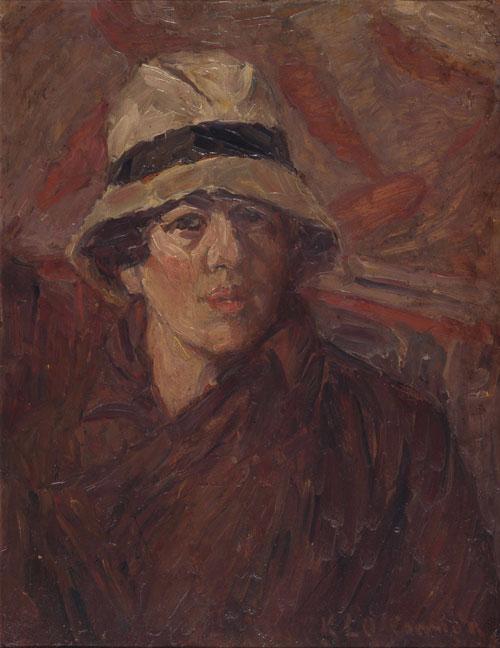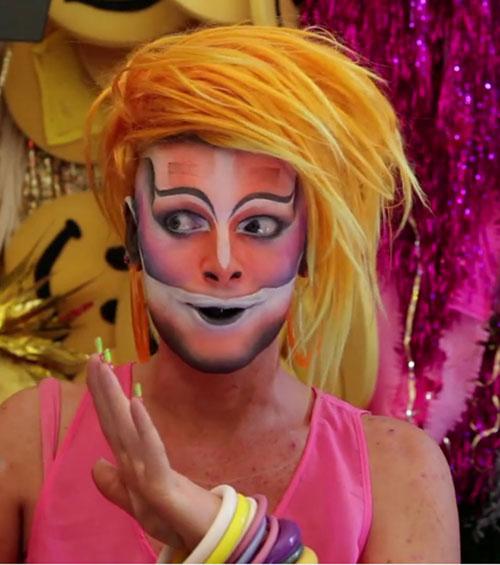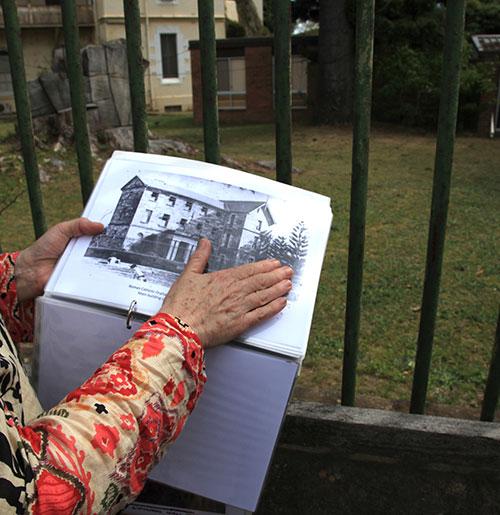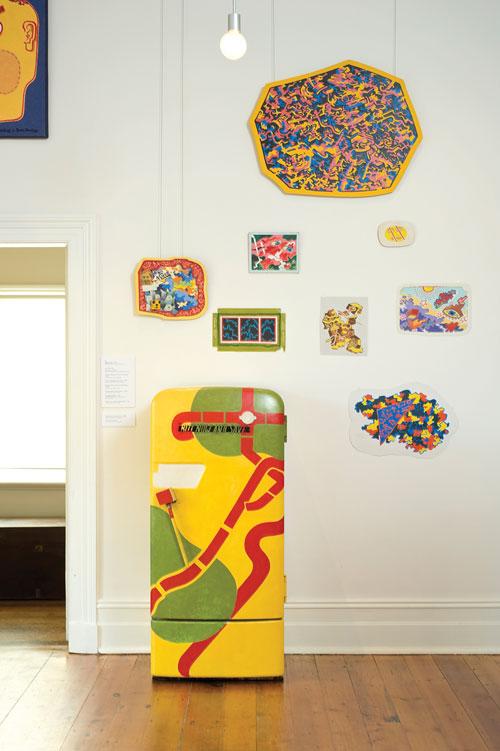Search
You searched for contributors, issues and articles tagged with Gender ...
Contributors
Artlink
Adam Geczy
Adelè Sliuzas
Allison Archer
Andrew Yip
Ann Finegan
Anna Herriman
Anna Nazzari
Anne Kirker
Anne Marsh
Anne Mosey
Bec Dean
Bindi MacGill
Bonney Djuric
Carol McGregor
Catherine Speck
Catriona Moore
Chari Larsson
Courtney Coombs
Daniel Grafton
Daniel Mudie Cunningham
Deborah Malor
Diana Smith
Dominic Chang
Elly Raymond
Erin Sickler
Eve Sullivan
Felicity Wright
Felix Ratcliff
Gemma Weston
George Alexander
Helen McDonald
Helen Moyes
Ian McLean
Ian North
Imran Ahmad
Jack Jeweller
Jad McAdam
Jane Deeth
Jane Goodall
Jennifer Kalionis
Jo Higgins
Joanna Mendelssohn
John Grech
John McPhee
John Pigot
John Tebbutt
Juliette Peers
Kathryn Mitchell
Kay Schaffer
Kirsten Rann
Kirsty Darlaston
Kurt Brereton
Laetitia Wilson
Laura Castagnini
Lily Hibberd
Linda Dement
Lisa Harms
Llewellyn Negrin
Madeleine Clark
Mark Thomson
Martyn Jolly
Mary Knights
Miriam Kelly
Neil Roberts
Noel Sanders
Odetta Kelada
Pat Hoffie
Patrick Sutczak
Paul Allatson
Penelope Richardson
Peter Timms
Petrina Moore
Prue Gibson
Rachael Sweting
Ray Spiteri
Rhonda Dredge
Robert Crocker
Robert McFarlane
Robert Nelson
Rosslyn Prosser
Russell Storer
Sasha Grbich
Shaune Lakin
Simon Blond
Stephanie Britton
Stephanie Radok
Suzannah Jones
Ted Gott
Ted Snell
Thelma John
Timothy Morrell
Tony McGowan
Vicki Crowley
Virginia Baxter
Vivien Johnson
Wes Hill
Zara Stanhope
Issues
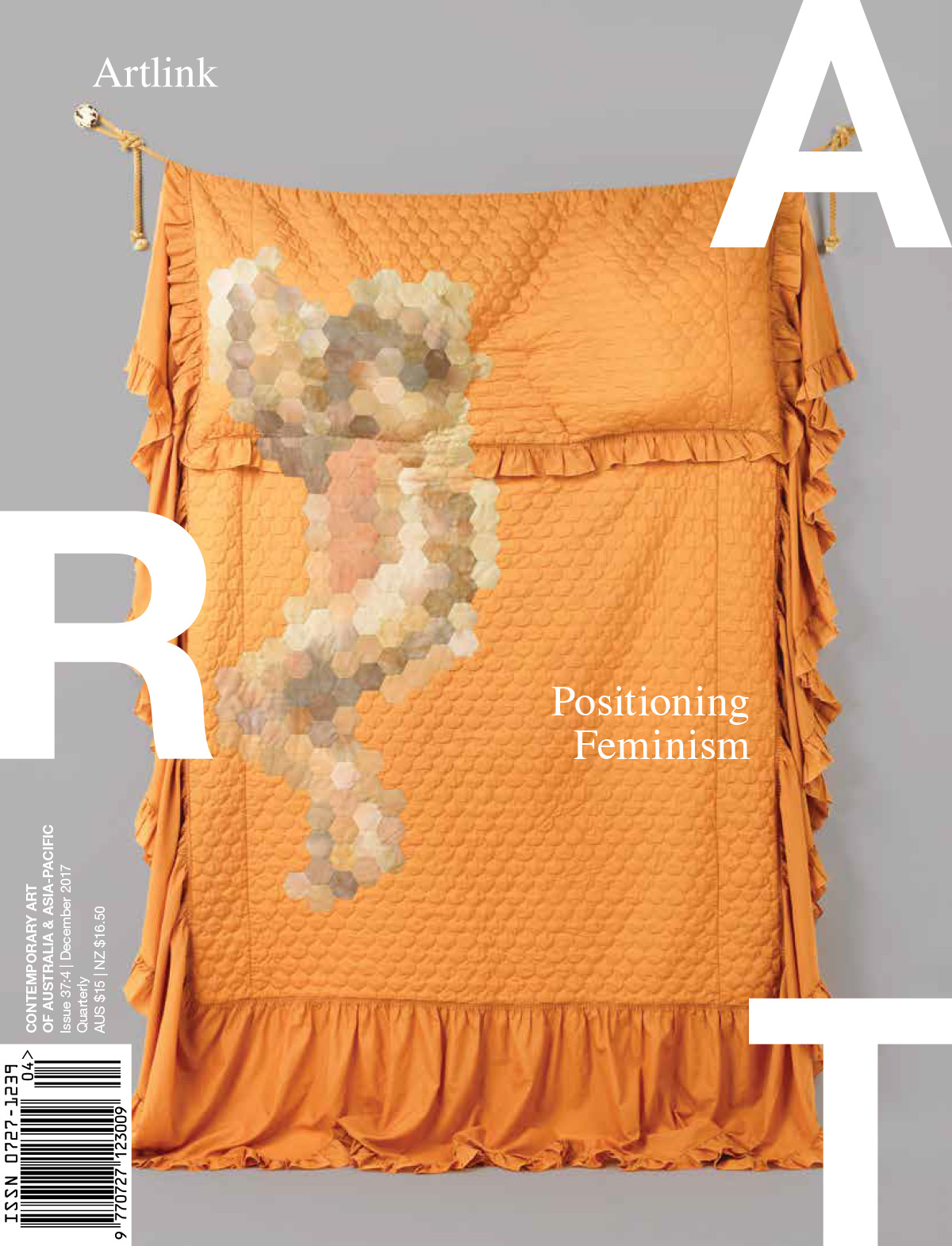
Positioning Feminism
Issue 37:4 | December 2017
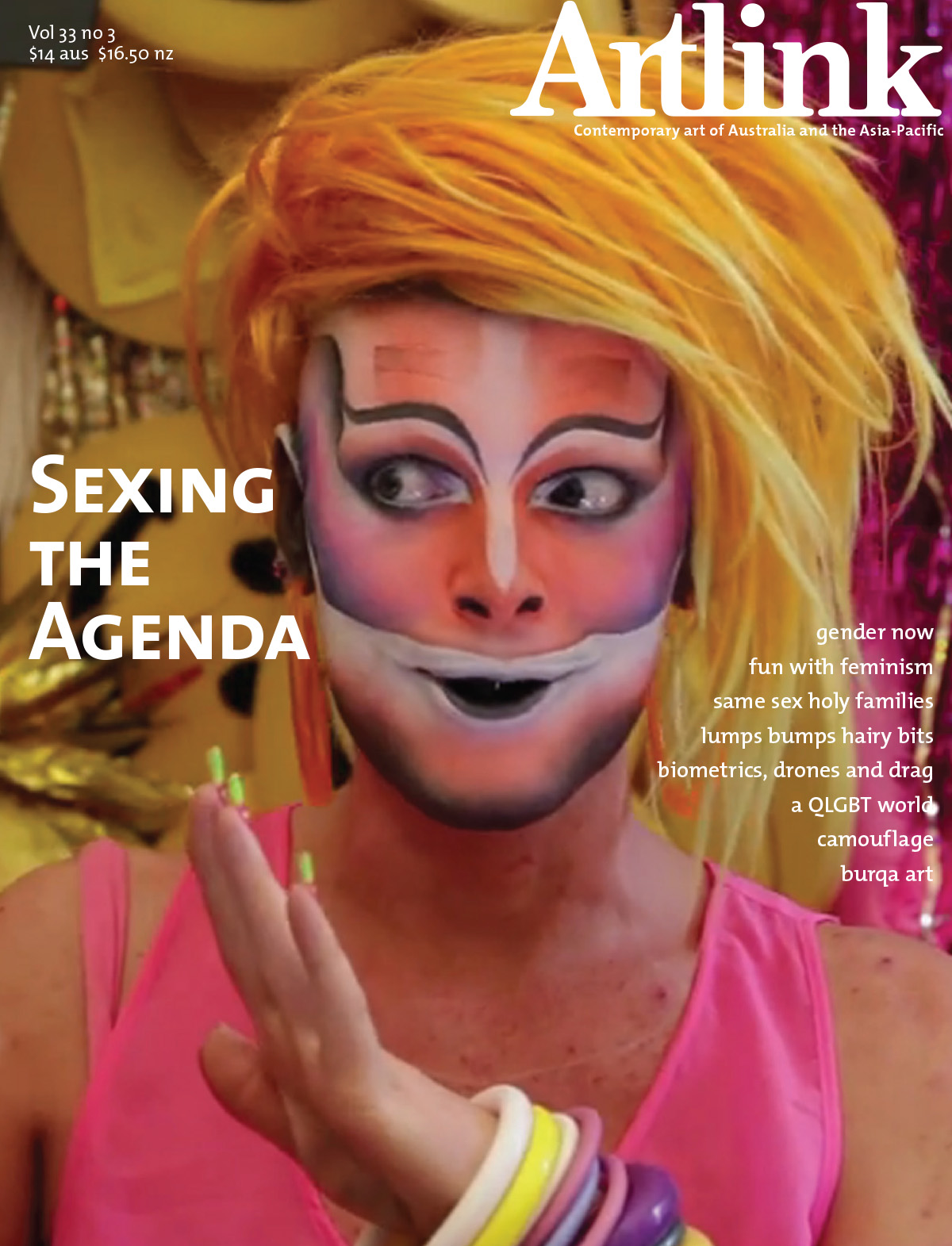
Sexing the Agenda
Issue 33:3 | September 2013
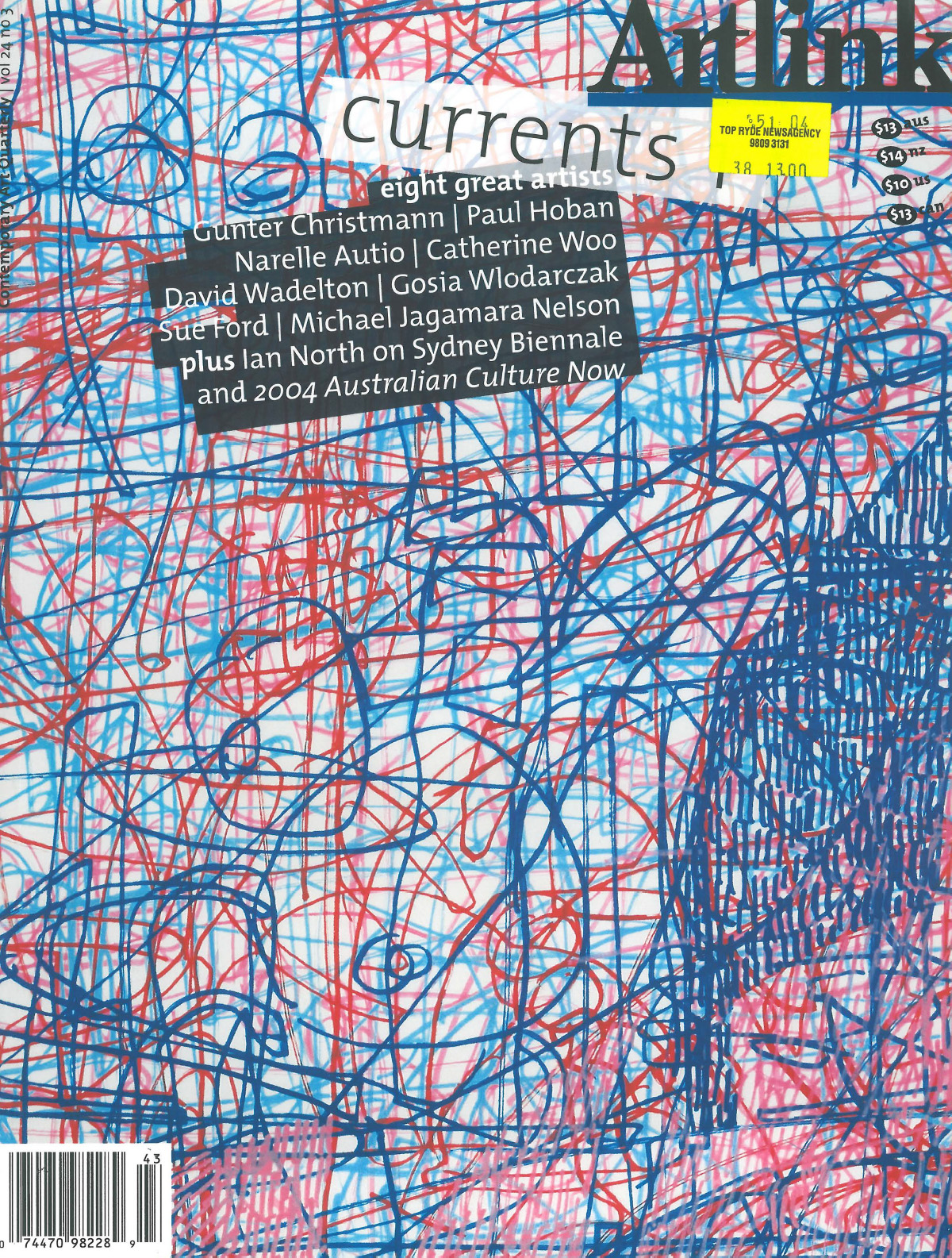
Currents I
Issue 24:3 | September 2004
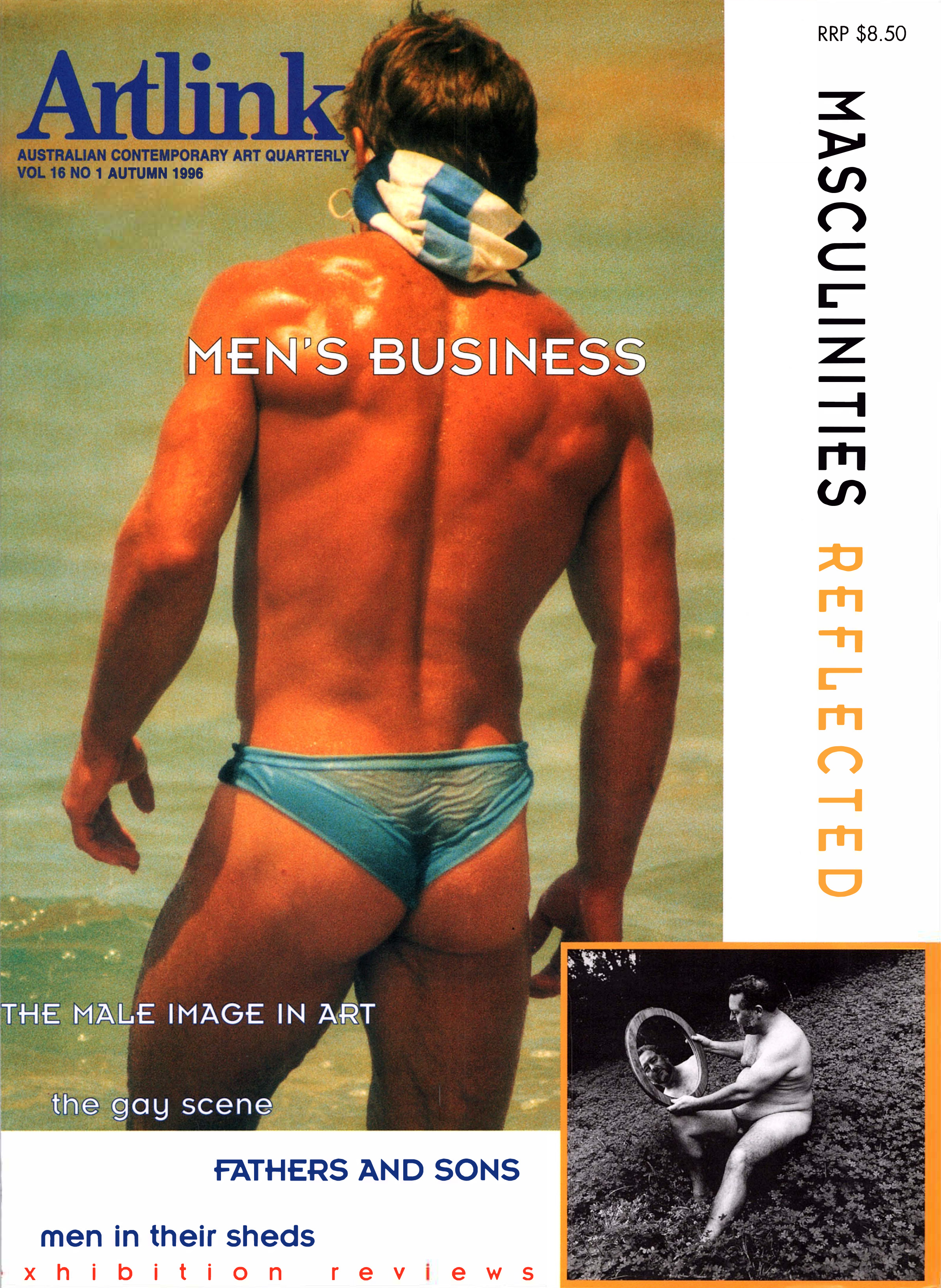
Men's Business: Masculinities Reflected
Issue 16:1 | March 1996
Articles

Letter from a young woman artist (after Janine Burke)
Diana Smith writes back to Burke questioning how much has changed.

55th Venice Biennale: The Encylopedic Palace
55th International Art Exhibition, Venice
1 June – 24 November 2013
1 June – 24 November 2013

Heartland: Contemporary art from South Australia
Art Gallery of South Australia
21 June – 8 September 2013
21 June – 8 September 2013

5th Auckland Triennial: “If you were to live here …”
The Auckland Art Gallery
10 May – 11 August 2013
10 May – 11 August 2013

Roy Ananda: The Devourer; Sandra Uray-Kennett: A Knights Tour through a Rent in the Wall
Contemporary Art Centre of South Australia Gallery and Project Space, Adelaide
26 April – 26 May 2013
26 April – 26 May 2013
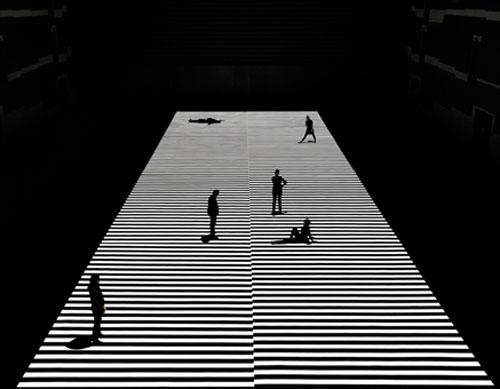
19th International Symposium of Electronic Arts: Resistance is Futile
19th International Symposium of Electronic Arts
7 – 16 June 2013
7 – 16 June 2013

My Country, I Still Call Australia Home: Contemporary Art from Black Australia
Gallery of Modern Art, Brisbane
1 June – 7 October 2013
1 June – 7 October 2013

Michael Jagamara Nelson Gives It A Go
Michael Jagamara Nelson is an artist who love - maybe even needs - a challenge. As Johnson examines, he has had his fair share. With his first painting, a piece he did for his uncle Jack Wayuta (a senior custodian for the Flying Ant Dreaming for Yuwinji) going unrecognised as one of his own for fifteen years, Michael Nelson made his mark in the indigenous art scene after his big break from Daphne Williams of Papunya Tula Arts.

The Sea Is In Them: Narelle Autio and Trent Parke
Narelle Autio and her partner in life and work, Trent Parke, completed a 16-month journey around Australias coastline in 2004. The two set out to document the culture of Australian coastal dwellers with an exhibition lined up at the Australian Centre for Photography the following year. Baxter speaks of her first encounter with the works of these remarkable photographers and goes on to offer some insight into the profundity encapsulated by these images.

The Poetics of Agoraphobia
Polish/Australian artist Gosia Wlodarczak draws obsessively, as a means of engaging with a biological cognitive bedrock. By drawing out the duration of her being she avoids the burden of memories and hope. This, she thinks, will lighten the weight of ideology that oppresses her with its exaggerated claims of authenticity...Ideology is already manifest in her sence of self, freedom and individual consciousness. It is even there in the languages she lives between; in her name, in her history, a graduate of the Poznan Academy of Fine Arts in Poland, now living in inner-city Perth.

Raw and Cooked Margins
A series of journeys and pilgrimages characterise Paul Hobans life, his account of which is spotted with significant exhibitions, readings, people, music and events. It wasnt until 1993, when he was 39, that Hoban first had a one man exhibition at Greenaway Art Gallery. Radok here paints a clear picture of his work - A sense of surfaces and layers; words - intelligible, unintelligible, back-to-front, upside-down; wrinkles and transparency; colour and pattern; modernism and archaism, and so on. A myriad of conceptual and stylistic devises that exist largely within the margins of art conventions.

What's Mine Is Yours: Touching the Surface of the Practice of Sue Ford
Melbourne artist Sue Fords 2003 photographic series Continuum is a suitable portal through which Stanhope looks at aspects of Fords work, a practice that has consistently evinced strength of vision and a humanistic philosophy, rich in connecting personal and local subjects to the field of national culture, social politics and the nature of individual existence. Continuum looks at the aftermath of bushfires and is aligned with her passionate reflection and documentation of the nature of our being in both time and place.
If there is one medium that records time it is photographs
- Sue Ford.
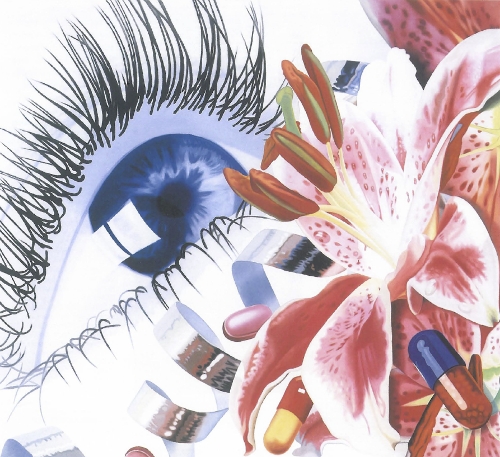
That was Then, This is Now: New Work by David Wadelton
David Wadeltons artistic career took a dramatic turn in the years 1997-98 after he purchase an iMac computer. Prior to this time he had been painting hybrid canvases and creating refined pencil and silverpoint drawings that displayed a unique quirckiness that was informed by the artists affection for the culture and language of Pop art. Gott explores the apparent shift in Wadeltons work, from the assemblages of the everyday objects that he first exhibited to his new works; mesmerising, hypnotic, dizzying.

MFC's and Gunter Christmann
Gunter Christmann was born in Berlin, Germany, in 1936. After two years in Canada, he arrived in Australia in 1959 and studied, somewhat casually, at the National Art School, Sydney, from 1962 to 1965. This article looks at the life and work of Christmann, that shambolic figure who, even as he is approaching his seventieth year, shows something of the perpetual youthful student. From his dress and demeanour to his his sloping walk and willingness to talk to the people he knows. A self taught artist, Christmann once saw his work as Geometric Abstraction and now states that the only major difference in style is the lack of intellectual order imposed on the work.

That Strange Quivering of Substance: The Recent Paintings of Catherine Woo
Many years ago the Chinese writer Lin Yutang expressed that, from an Oriental perspective, Western artists always seem to depict objects from the outside, whereas those from China and Japan express their experience of them from within. This Eastern approach is inherent in the culture, not a position able to be merely adopted, and springs in part from religious inheritance, but also from the pictorial nature of Asian written languages. This inherent approach can be found in the recent work of Catherine Woo, expressing some sort of biological affinity. If the paintings can be said to be about anything, it is a the fine balance between energy and rest rather than the apparent subject matter.

On Your (Motor)bike - REVIEW: Reason and Emotion, Biennale of Sydney, 2004, and 2004: Australian Culture Now, Melbourne
Sydney Biennale bad, 2004 in Melbourne good. The artworld's consensus locked in quick and hard. Fair? Of course not. Why compare the two, anyway? Because the National Gallery of Victoria (NGV) and the Australian Centre for the Moving Image (ACMI) seemed to set it up that way, by the timing of their show. They certainly took as 2004's model the nationally bound Whitney Biennial and, in particular, the Art Gallery of New South Wales's Perspecta exhibitions (last one 1999) - in turn established to counter the perceived internationalism of the Sydney Biennale.

21st Telstra National Aboriginal & Torres Strait Islander Art Award
Museum & Art Gallery of the Northen Territory 13 August 7 November 2004

Jacky Redgate: Survey 1980-2003 [Three Exhibitions]
III, V, VI of Contemporary Art Projects SA 2004 Contemporary Art Centre of South Australia Curator, Alan Cruickshank 23 April - 23 August 2004

Sue Richter. On Colour: Whiteblack Red
24HRArt, Darwin 9 July - 7 August 2004 Araleun Arts Centre, Alice Springs 3 April - 9 May 2004

Three Colours: Gordon Bennett and Peter Robinson
Heide Museum of Modern Art, Melbourne 8 April - 4 July Travelling to Victoria, Tasmanaia, Queensland, NZ July 2004 - July 2006

Barking Up the Wrong Tree
Carnegie Gallery, Hobart 10 June - 4 July 2004 Curators: Stephen Mori, Felicity Wade & Raquel Ormella

Octopus 5
Raafat Ishak, Horst Kiechle, Kaji Ryui, Grant Stevens. Curator: Nicholas Chambers Gertrude Street Contemporary Art Spaces 9 July - 21 August 2004

Philip Wolfhagen
The Inner Edge Academy Gallery, University of Tasmania, Inveresk 14 June - 9 July 2004

Peter Timms' 'What's wrong with contemporary art'
Blak Insights Queensland Art Gallery 3 July - 30 October 2004
Men
What boys give up to become men is all contained in this photograph...
Men's Business: Masculinities Reflected
Masculinities Reflected
Guest editors of 'Masculinities Reflected' Noel Sanders and Kurt Brereton reflect on the nature of masculinity.
Men's Business: Masculinities Reflected
Observing Father's Day in a Good Weekend
Analysis of maleness from a semiotic approach in the context of the lifestyle magazine 'Good Weekend' published as a supplement to both The Age in Melbourne and The Sydney Morning Herald.
Men's Business: Masculinities Reflected
Fathers and/or Sons
Musings on the man who was the author's father from a multicultural perspective.
Men's Business: Masculinities Reflected
I've Written a Letter to Daddy
Social documenter Maxx Image is obsessed with the colour purple. Black leather is the costume of rebellion and the thrill and valour expounded by such an ideal could be seen as enticing accessories to the passion and zeal of leather sexuality.
Men's Business: Masculinities Reflected
Art and Masculinity after Auschwitz after Bosnia: The work of Dennis Del Favero, 1995
Masculinity continues its argument with itself, quizzical at its self-propelled self-assertion. But in asserting aggression the pain is not just experienced in the victim. For even in the crudest acts of coitus, for a moment, the raper becomes the raped, he is tied by his penis and his balls into an abomination.
Men's Business: Masculinities Reflected
Men and Mettle: Recent Portraits by Rox De Luca
Rox de Luca's exhibition of 19 men portrayed in 'All Meat No Veg' were all of men known to her. What did the portraits reveal about the sitters?
Men's Business: Masculinities Reflected
Demystifying Masculinity: The Photography of Krystyna Petryk
Polish born Krystyna Petryk has long been fascinated with portraiture and representations of the nude in photography. Her own investigations began in Warsaw by photographing her pregnant friends and continued after her arrival in Western Australia in 1982. Once here she broadened her explorations to include both male and female subjects before shifting to photograph and research representations of men exclusively.
Men's Business: Masculinities Reflected
Exquisite Corpses
We collage, genderbend, cross dress and polymorph exquisite corpses out of media and advertising personalities, then use them as fantasy aids in the cause of our mundane desires.
Men's Business: Masculinities Reflected
Image Bank: Works by Various Artists
Series of works by Tyrone Townsend, Victoria Straub, Polixeni Papapetrou, Phil George and Simon Cardwell. Large format and mainly colour images.
Men's Business: Masculinities Reflected
They Are Not Photographs: Natalie Lowrie
The images are selections from a body of work called flamingharlots@trashed, created by Sydney based photographer Natalie Lowrie. The images, digitally retouched photos of Natalie's circle of friends and acquaintances were exhibited at the Polymorph Gallery at Newtown.
Men's Business: Masculinities Reflected
Figures of Elongation
Using illustrations from a technical manual of the 1940s `the author examines the working male figure in popular iconography focusing on masculine representation in the visual arts and its link to the means of production.
Men's Business: Masculinities Reflected
Saviour and Sportsman
Vigilantly looking out to sea, the two manifestations of the life saver, the saviour and the sportsman, are combined in this 'gay greeting card' in such a way as to draw on the history of surf club masculinity and create an erotic pose.
Men's Business: Masculinities Reflected
Symbolic Identities: Masculinity and the Motor Cycle
Since 1927, the idea that the motor cycle is synonymous with assertive and unmediated masculinity has been enlarged and expanded through a broad range of visual, literal and cinematic imagery to the point where a machine which was once acclaimed as a means of transport has been transformed into a gendered cultural icon, an object of and for masculine display.
Men's Business: Masculinities Reflected
Sorely Tried Men: The Male Body in World War Two Australia
During World War Two, the Australian government's Department of Information represented the male body in at least two distinct ways. The photographer Edward Cranstone photographed a heroically active, phallicised body and the cameraman Damien Parer filmed a heroically suffering abject body.
Men's Business: Masculinities Reflected
Unwanted Shadow Man
Photos and essay by the author on a relationship between men.
Men's Business: Masculinities Reflected
Public Objects and Private Parts in Harry Hummerston's Recent Assemblages
Harry's work immediately identifies the object as a site of meaning. It is fair to say that Harry is strongly opposed to any restriction or taboo upon what he may represent, particularly from the arena of representing the female object or gender.
Men's Business: Masculinities Reflected
Men Without Toilets
Let's speak about nomads and farmers... The acrid vapours that fill the cast iron nooks and crannies by day: the trickles on metal that appear in my black and white slides each night like blood from a more visible crime: this evidence of the distillation of men: these signs are signs enough of the collapsing consequences of 'farming'.
Men's Business: Masculinities Reflected
Soap: A Letter to Sam Schoenbaum on Not Writing an Essay on a Show Called Phallus and its Funtions
What is the phallus?
Men's Business: Masculinities Reflected
Blokes and Sheds
Images and text by Mark Thomson from his recent book 'Blokes and Sheds'.
Men's Business: Masculinities Reflected
The Back Yard Shed
In 1992, Helen Moyes made a documentary 'The Back Yard Shed' which set out to look at the lives of a cross-section of Australian households through the phenomenon of the back-yard shed.
Men's Business: Masculinities Reflected
Like a Chant
Exhibition review Recent Work: Hossein Valamanesh
4-29 October 1995,
Greenaway Gallery, Adelaide SA
Men's Business: Masculinities Reflected
Perverse Desire?
Exhibition review Mail Order (for Women): Di Barrett
14 Sept - 8 October 1995,
EAF [Experimental Art Foundation]
Adelaide, South Australia
Men's Business: Masculinities Reflected
Light Works
Exhibition review Some Pictures from a Somniloquist's Diary
Tony Trembath
1 November - 26 November 1995
Greenaway Gallery Adelaide SA
Men's Business: Masculinities Reflected









